Samsung is swimming against the current with the Galaxy S22 and has made the smartphone smaller than its predecessor. The manufacturer thus occupies a rather exclusive position, especially in the Android segment. In addition to ergonomics, the Galaxy S22 stands out for long-term upgrades, the screen, the workmanship and the camera.
Galaxy S22 is smaller and cheaper
In addition to the Galaxy S22+ and Galaxy S22 Ultra (test), Samsung has a third high-end smartphone in its quiver: the comparatively small Galaxy S22. This model is characterized above all by the reduced dimensions of 70.6 × 146.0 × 7.6 mm (W × H × D), which are increasingly rare in the top Android class. Apart from this feature, the Galaxy S22 is the cheapest of the three new smartphones, as the table below shows. Samsung offers the S22 in two configurations, 128GB or 256GB, priced at €849 and €899 respectively.
Technical data at a glance
Apart from the dimensions, the other specifications are almost identical to the Galaxy S22+, the changes only stem from the smaller size. The single 6.1-inch OLED screen has a higher pixel density due to the same high resolution. On the other hand, Samsung has not found a place for the UWB module in the smartphone, so ultra-wideband transmissions, such as those used for digital car keys, are no longer possible. The biggest caveat is the battery, which is 800mAh below the Galaxy S22+ and 300mAh below last year’s Galaxy S21, which is slightly larger.
design and feel
Mobile devices like the Galaxy S10e, Pixel 5, Zenfone 8, iPhone 12 and 13 mini or now the Galaxy S22 are always welcome in the proofing, because they make it clear how nice it is to have a comparatively small smartphone (temporarily) to own. No annoying bumps in your pants pocket, no uncomfortable feeling when sitting and no contortions of your hands when using it are some of the advantages that come with a small smartphone. At 168g, the S22 is also significantly lighter than larger models in the same series, which start at 196g.
Small smartphones at a glance
The new S22 doesn’t come very close to the three-year-old Galaxy S10e, which measured 69.9 × 142.2 × 7.9mm at the time, though it’s only 4mm longer. And the iPhone 13 mini remains the class leader among high-end compact smartphones at 64.2 × 131.5 × 7.65mm. But the 70.4 × 144.7 × 8mm of a Pixel 5 hits Samsung almost perfectly. The Zenfone 8, on the other hand, is slightly larger. It is worth noting that from the Galaxy S21 to the S22, Samsung has opted for a smaller design. That rarely happens these days, instead smartphones have steadily grown from generation to generation in recent years because larger screens have been installed. The screen of the S22, on the other hand, has been reduced from 6.2 to 6.1 inches, so the dimensions could be reduced from 71.2 × 151.7 × 7.9 mm to 70.6 × 146.0 × 7.6mm.
The S22 feels better in the hand.
Of the three Galaxy S22 smartphones tested, the regular S22 is by far the best to hold. However, the choice of materials and workmanship are at the same high level in all three devices. The clear line with a flat screen and an integrated triple camera speaks for the S22 and S22+, while the S22 Ultra still relies on the curved edges of the screen, which have a negative effect on the use of the stylus, and lenses. independent for the camera.
Gorilla Glass Victus+ and IP68
Even Samsung’s smallest smartphone is protected by Gorilla Glass Victus+ on the front and back, while the glass on the back is matte, so it’s only susceptible to greasy finger marks. Dirt can be easily washed off, because an IP68 certification again protects against wet cleaning and dust.
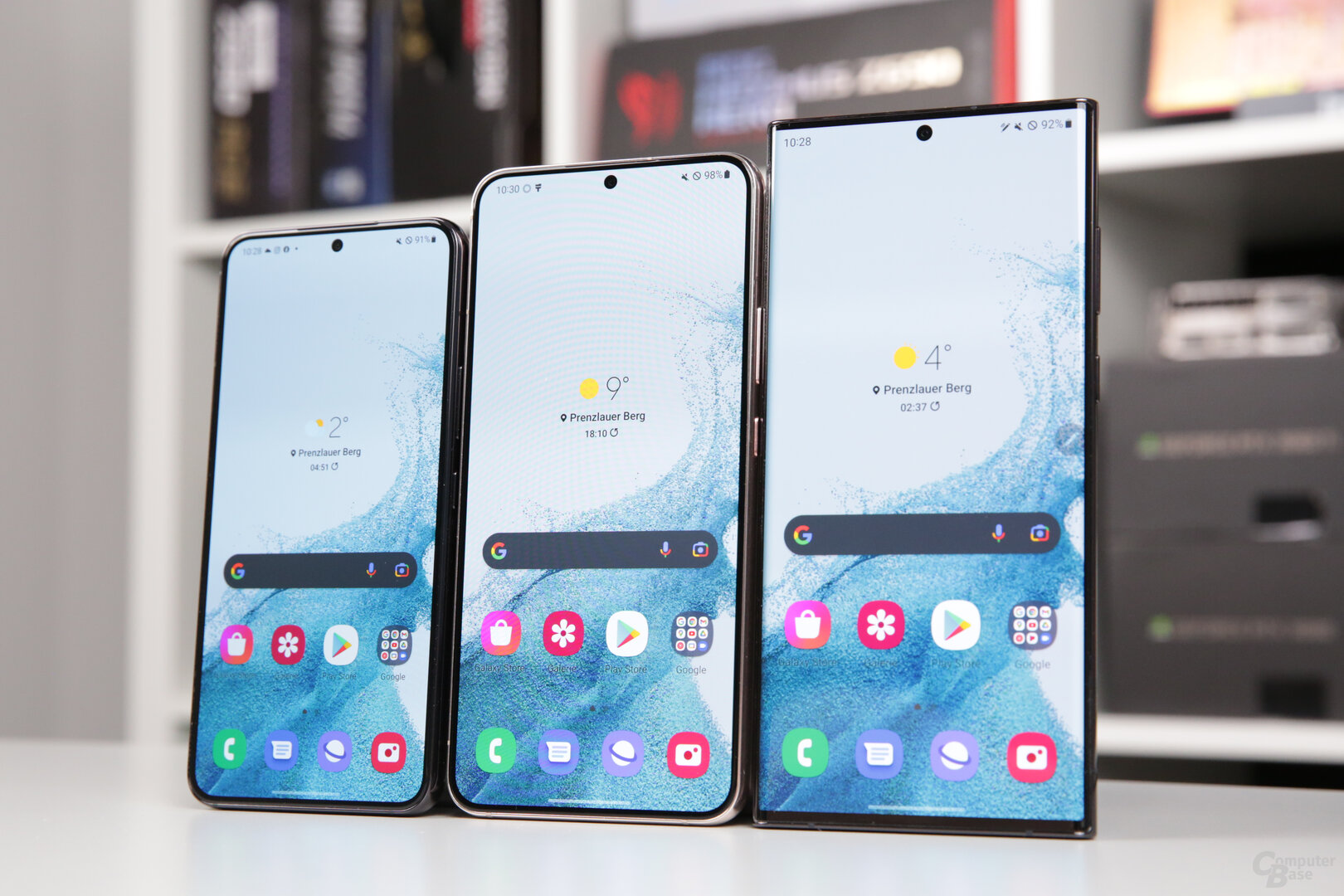
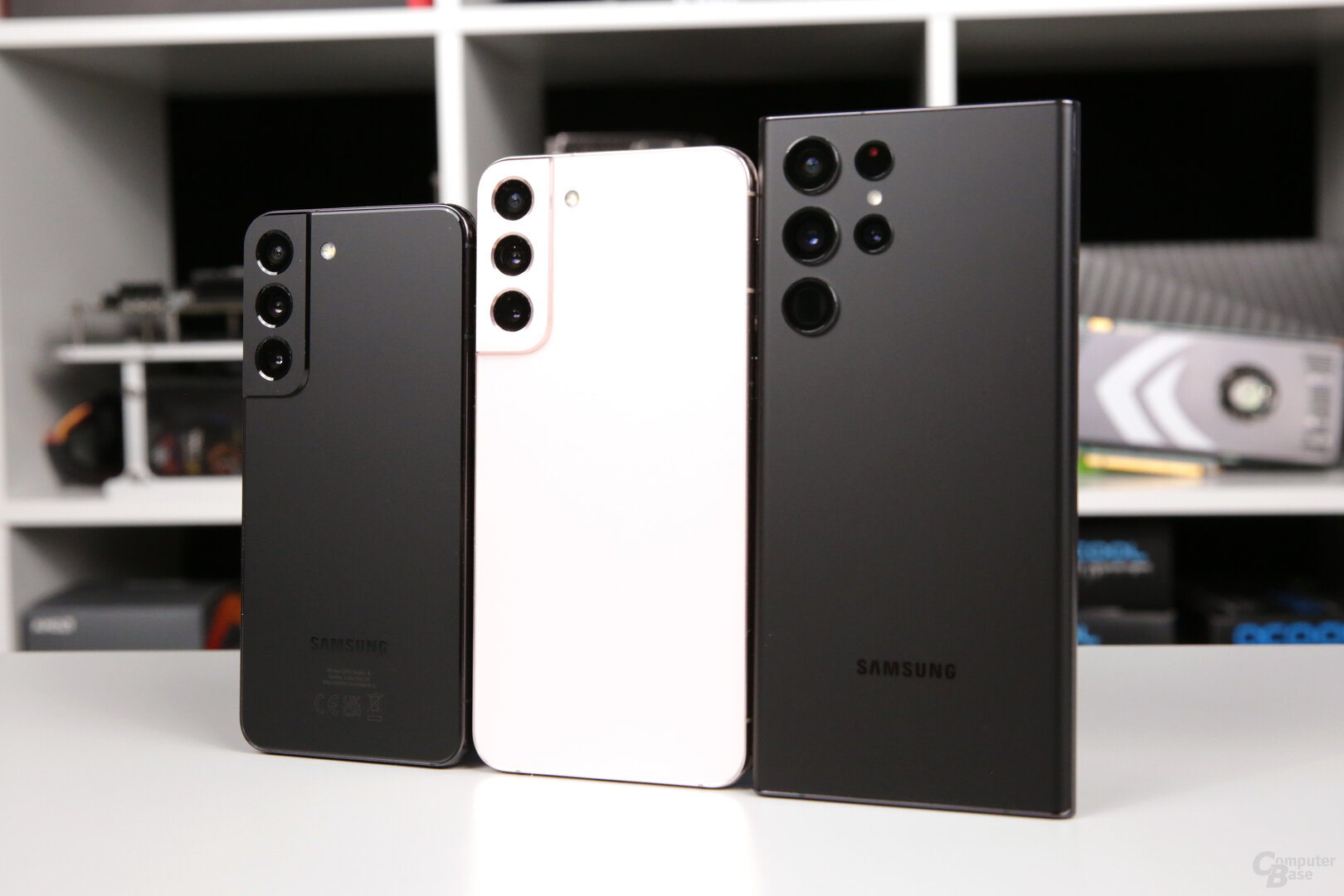
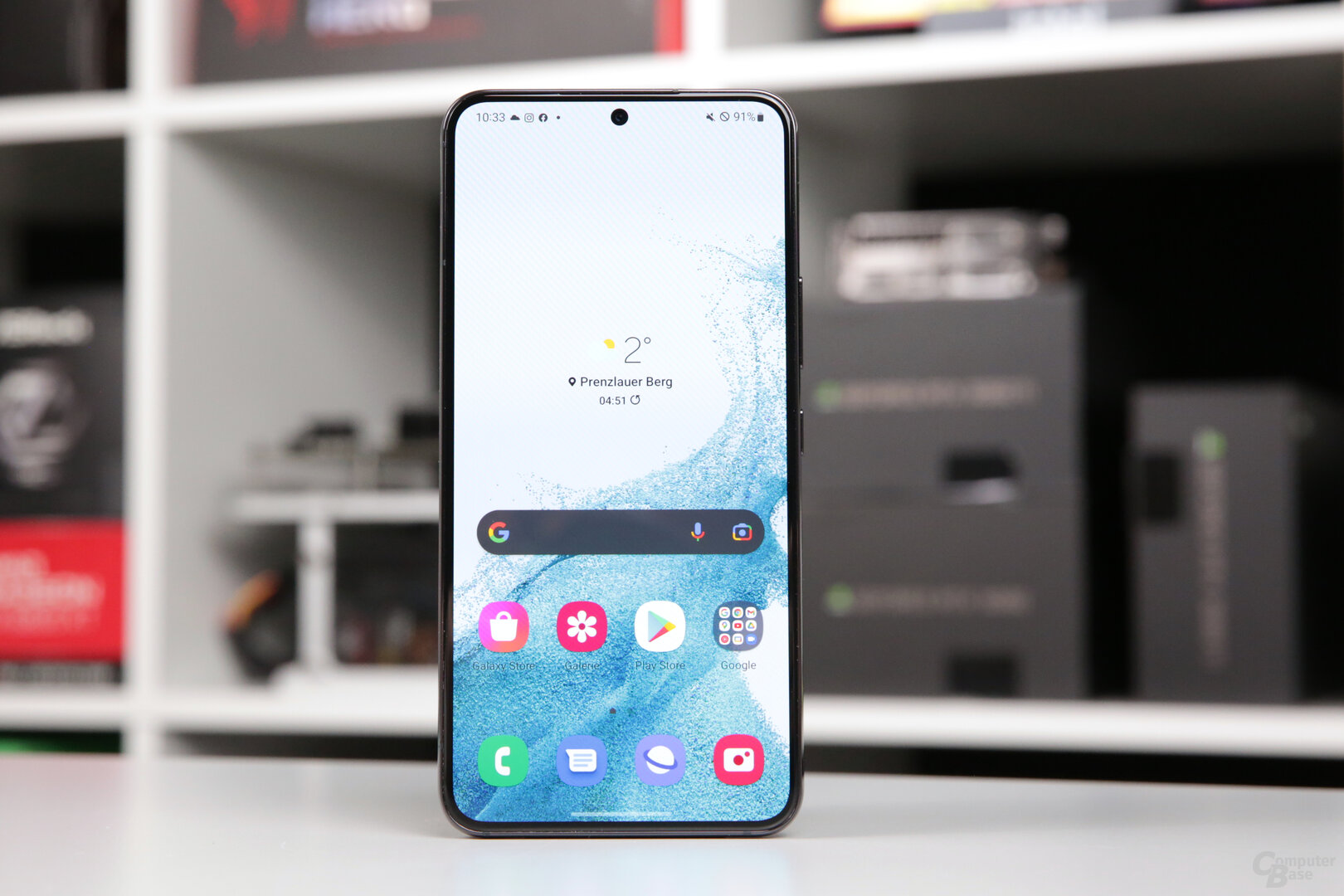
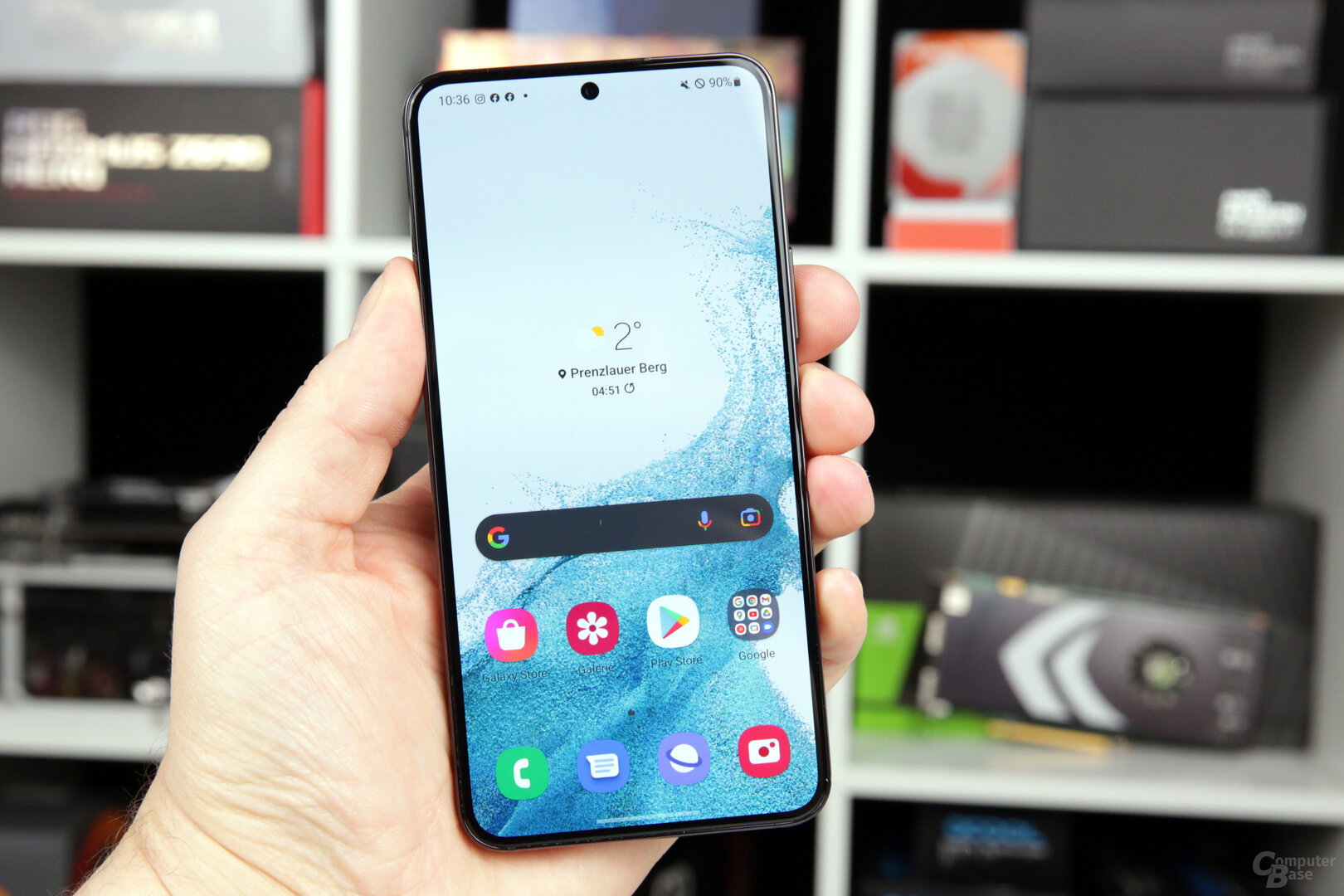
The smaller screen shows almost the same amount
The downside of a smaller smartphone is of course the smaller screen. If you’ve been in the class with 6.7 to 6.9 inches for a long time, the compact S22 takes a bit of getting used to at first. Everything is mostly displayed a bit smaller. However, less content is only visible to a limited extent because the S22 Ultra simply shows everything a larger size in a direct comparison. By default, the home screen is still four apps wide, and the same goes for the 4×5 grid of apps in the app drawer.
Within apps, the S22 Ultra has a slight edge over the S22. At first glance, YouTube shows a subscribed channel and the channel name of the second video can be seen in the subscriptions timeline. In ComputerBase, in Chrome, the number of comments and the author of the second large article are now visible without scrolling. The ticker shows one less piece of news about the little S22. The situation is similar on Instagram, which makes a story more visible at the top. The number of visible posts remains at one. No noticeable drawback could be seen in the test due to the smaller screen.
Smaller screen with higher pixel density
In return, the S22 rewards the 0.5-inch diagonal omission with a slightly sharper typeface, because Samsung leaves the resolution unchanged at 1080 × 2340 pixels compared to the S22+. The refresh rate is automatically regulated between 48 and 120 Hz, permanent operation at 60 Hz is optional. The LTPO panel is reserved for the S22 Ultra and regulates between 10 and 120 Hz.
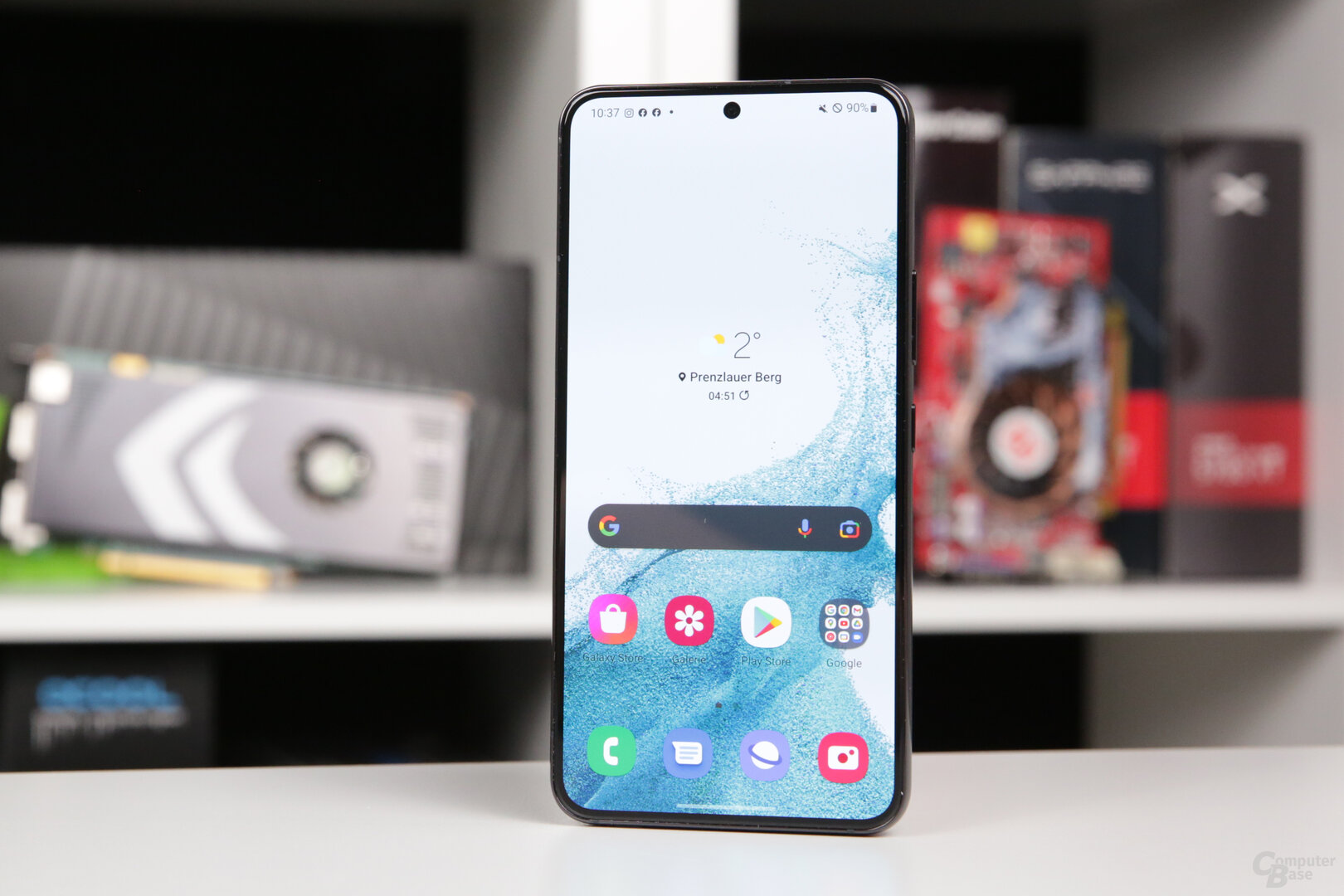
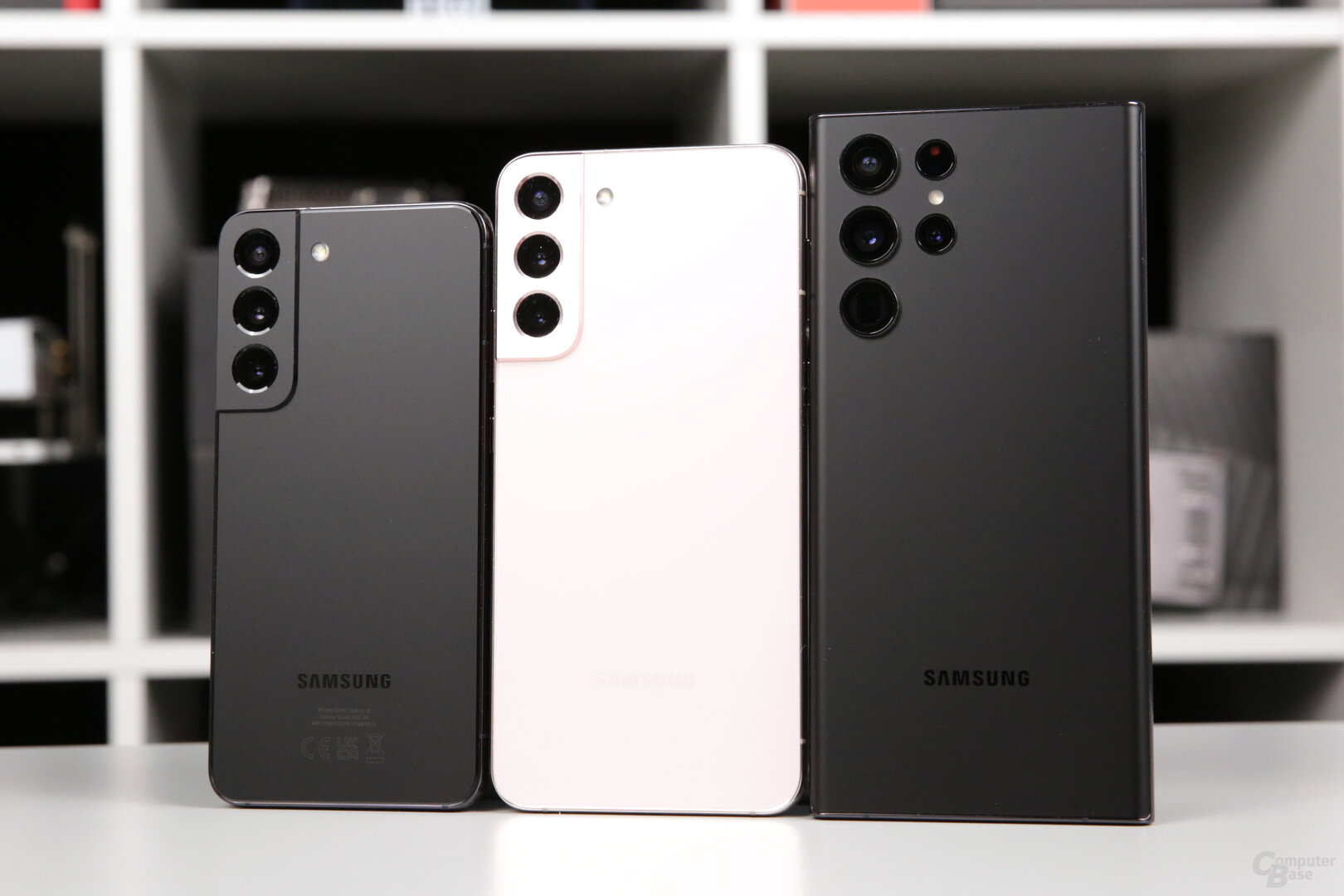
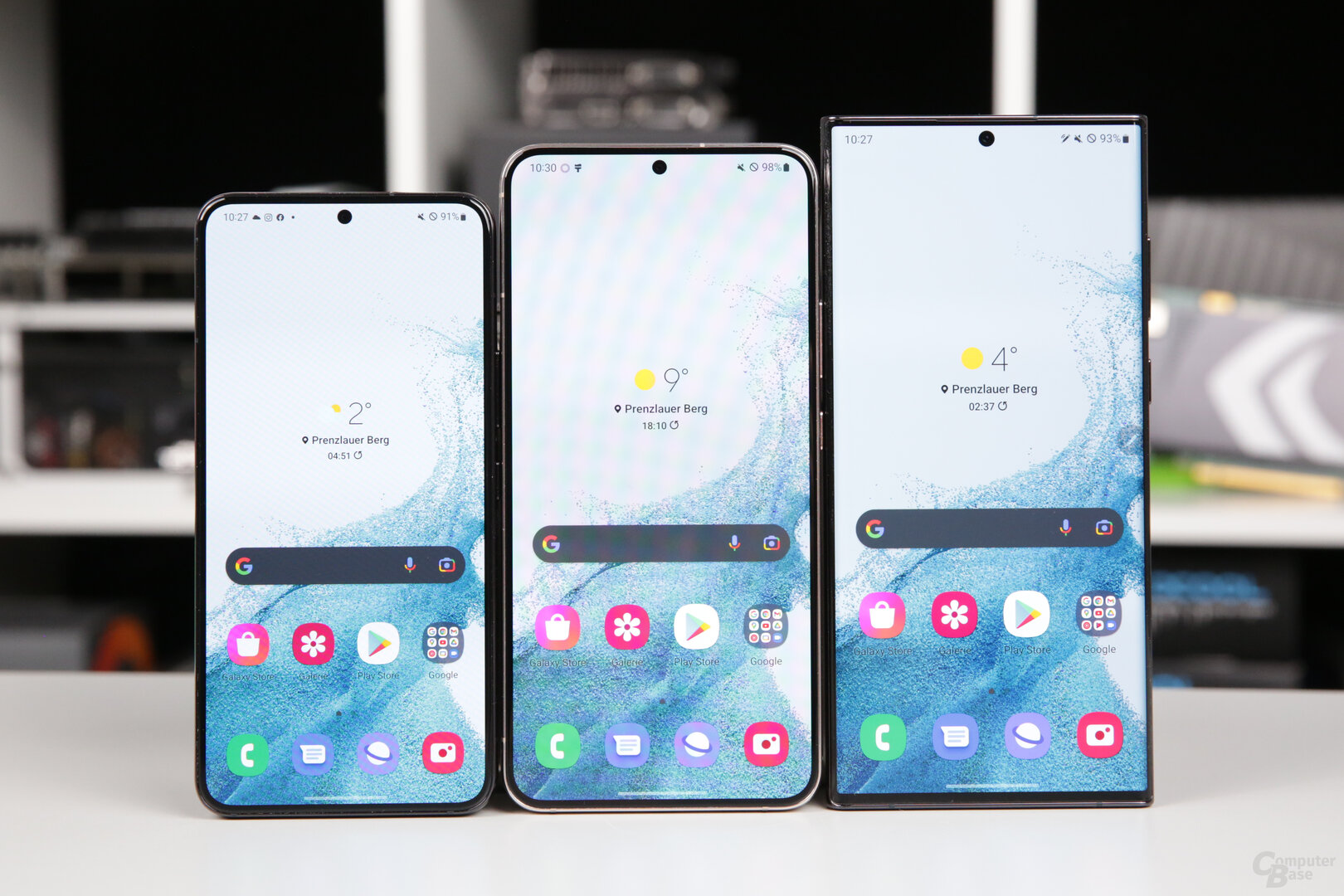
Exactly as (less) bright as advertised by Samsung
However, you then have to go straight back to maximum brightness, although it is still very high despite the limitations. Samsung announces the S22+ and S22 Ultra with a surface area of 1,200 cd/m² and a maximum value of 1,750 cd/m², while the S22 “only” has a surface area of 900 cd/m² and a maximum value of 1,300 cd/m² . The test candidate delivers on the advertising promise best with a measurement of 911 cd/m² (area) or 1,278 cd/m² at an “Average Picture Level” (APL) of 10 percent.
The new boost is a nice bonus.
The S22 again only reaches the highest brightness values with adaptive brightness. When manually controlled, 505 cd/m² (100% APL) and 627 cd/m² (10% APL) were determined. Fortunately, the effective boost in manual mode is also included in the smaller Galaxy S22, which can be used to unlock 814 cd/m² (100% APL) or 1113 cd/m² (10% APL). Although the S22 does not quite reach the values of an S22 + or S22 Ultra in general, the brightness is more than enough for practically all day-to-day situations.
Fast ultrasonic fingerprint sensor
Although the S22 is slightly slimmer, Qualcomm’s ultrasonic fingerprint sensor has also made it the smallest smartphone. As with the larger models, the sensor stands out above all for a very high speed when unlocking, but also for its compatibility with wet fingers. The position in the lower third of the screen has also been well chosen from an ergonomic point of view.

Introvert. Beer guru. Communicator. Travel fanatic. Web advocate. Certified alcohol geek. Tv buff. Subtly charming internet aficionado.